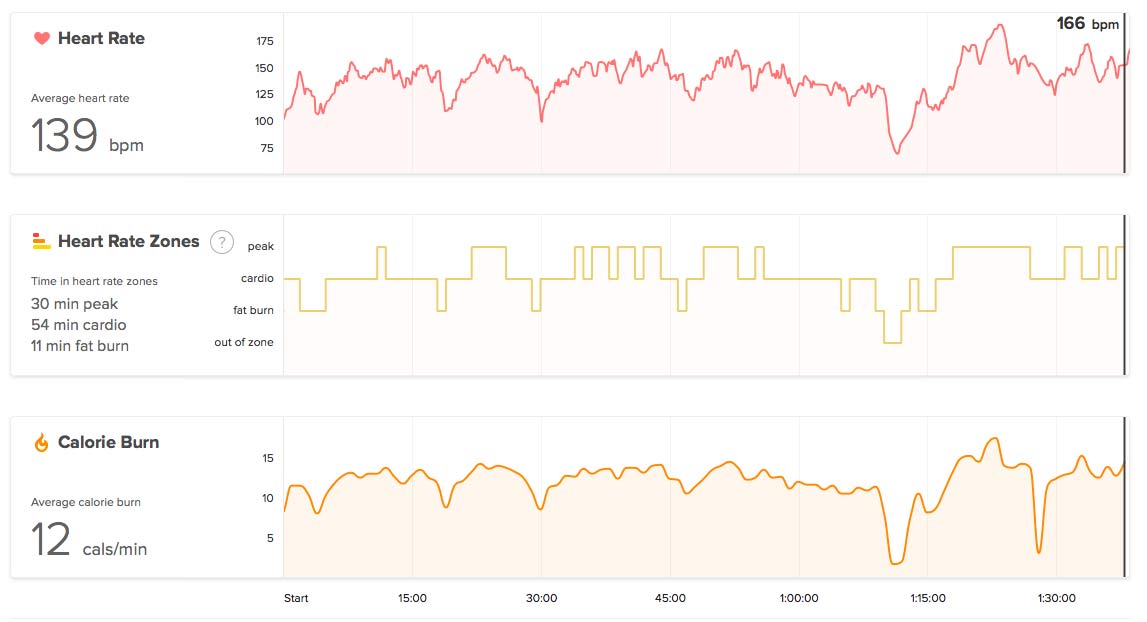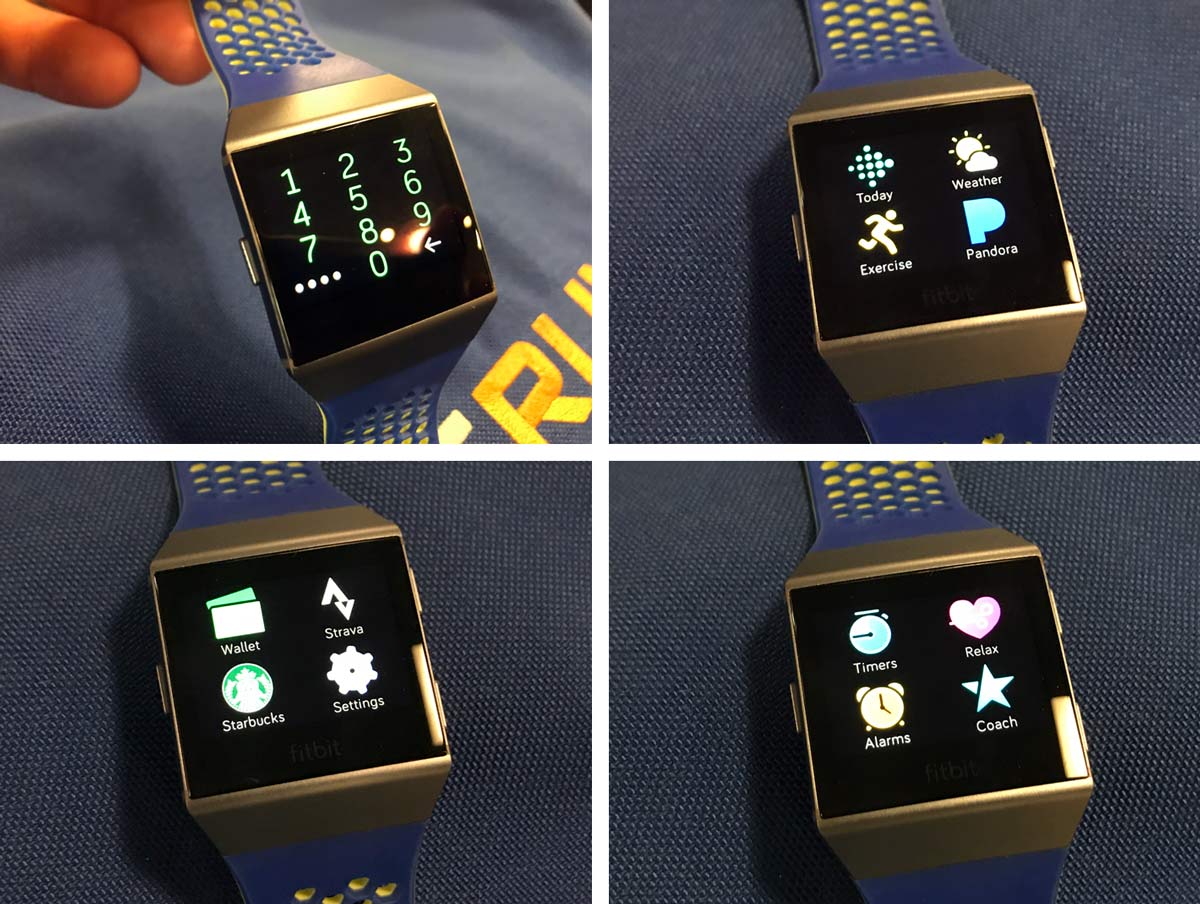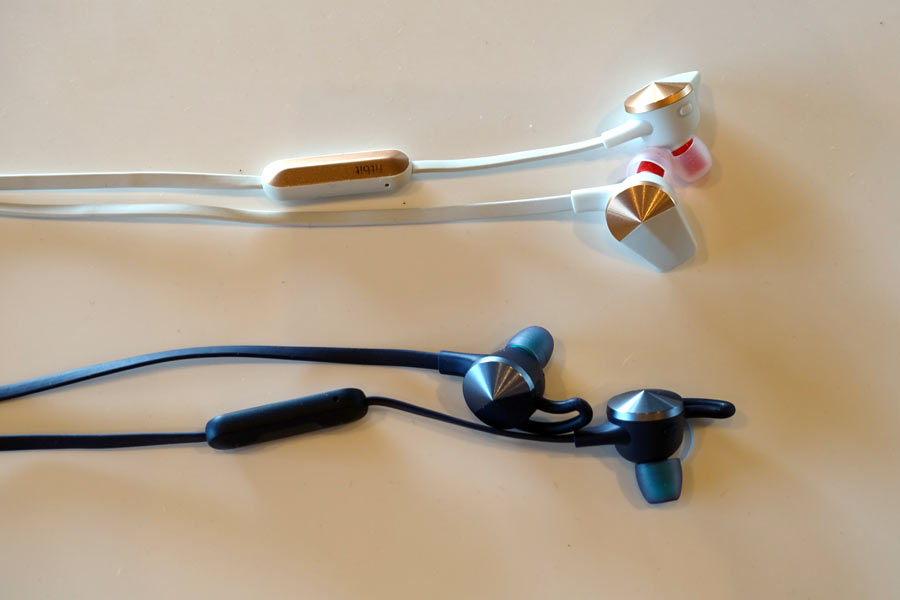We’ve tried a lot of wrist-based heart rate monitors, and the new Fitbit Ionic is the new category killer thanks to long battery life, long feature list and a new tri-color heart rate sensor that works even under water.
Which is good, because I’m going to dive deep into the features. But first, a bit of history on the brand. This is Fitbit’s 10 year anniversary. The first product didn’t actually ship until 2009, but was founded in 2007. They wanted to launch by Christmas 2008, but production and shipping delays plagued them. The first product was a wearable clip that tracked movement and sleep quality. Now, they’ve shipped more than 67 million devices and have the #1 app on iOS and Android and done many, many millions in revenue.
The devices have continued to improve, offering better accuracy, constant heart rate monitoring and a bodyweight and composition scale that syncs with the app. At the heart of it all is a system that provides useful feedback and gamifies the idea of getting fit. And it’s grown in part because they have 1,300 enterprise customers with 2.6 million users that have tied their account to corporate wellness programs.
Adding to the value of the company is their aggregated data. Eighty two million hours of heart rate, 79 trillion steps, 5 billion nights of sleep and 160 billion hours of exercise tracked. This gives them a massive amount of data to not just see how people are using their products (or how they’re exercising), but also improve their algorithms.
THE NEW FITBIT IONIC MARRIES FORM & FUNCTION
Now, they’re jumping into the smart watch category. The new Fitbit Ionic is their way of using the processing power, improved battery capacity and advanced capabilities of a smartwatch and using that to maximize the value of fitness and sleep trackers.
The Ionic is the first product that was completely designed in house, both for the product design and the manufacturing process. It’s designed to complement and empower your “health journey”. By that, they mean it needs to be comfortable enough to wear all day, every day, in any situation.
It gets a faceted, angular design that’s as much functional as aesthetic. It’s easier to slip under a long sleeve cuff (great for both dress shirts and slipping on a rain jacket while riding). The shell is an aerospace grade alloy that’s made using their new nano-molding manufacturing tech, which fuses metal and plastic into a single piece. This lets them integrate the antennas and hardware directly into the body for better GPS signal accuracy. It also makes more room for the battery, and they’re claiming a whopping four full days of use, or up to 10 hours with GPS tracking.
Buttons are knurled to provide a better tactile experience while working out. One main button gets things started, and two buttons on the other side cycle and select various functions. Or use the full color touch screen to do most of it. The lens has a spherical shape, which is unique among the overwhelmingly flat glass products on the market. It looks good.
The band is removable with two small buttons on the back, letting you switch between rubbery active bands for sport and more elegant leather bands for work. On the top, they blend directly into the design. The leather band is mildly perforated, giving it a combination sporty and professional look, and the sport band is a lightweight, highly perforated material.
HIGH TECH SPORT & TRAINING FEATURES SET IT APART
The activity tracker market is crowded, admits Fitbit’s Marketing Manager, Daniel Shaw. So what’s the point of launching another fitness tracker? They wanted to make is something that could help you reach your goals. Yes, there are other systems out there that tell you how many steps you’ve taken, some idea of your recovery state, and the quality of your sleep. The Ionic takes all that to the next level.
Enhanced PurePulse HR improves the HR tracking during high intensity efforts, something
The new system combines green, red and infrared LEDs with three sensors to improve accuracy. And a relative SpO2 sensor provides close-to-real-time blood oxygenation, which will eventually let them help track things like sleep apnea. It won’t be fast enough for sport-specify in-training SMO2 measurements, though. And even they admit if you want total accuracy, a chest strap is still going to deliver better results…but they’re getting closer with the Ionic.

On top of all that, it’s waterproof to 50m and can still track your HR while swimming. Triathlon, anyone?
IT’S POWERED BY APPS

The Ionic uses the Fitbit smartphone app to let you load Fitbit apps onto the watch, change the clock face and otherwise customize it. They’re also opening it up to third parties to develop apps – expect weather, Pandora and Starbucks to be on the docket at launch. And yes, Strava, which will let you see your entire ride and run history right on your wrist…not just the current ride recap! Look for many more to come in the future, which will help keep the watch up to date over time.
Fitbit Coach is their new workout guide that uses the screen’s full color to show actual videos for each exercise. Afterward, you can tell it how the workout went (too easy? too hard?) and it will adjust and send you a better workout the next day. Audio coaching coming in early 2018.
Part of that 3rd party SDK and app ecosystem will be watch faces. Silly, maybe, but we all like to set ourselves apart, and options are good. And there’ll almost certainly be apps for navigation, local news, etc., letting you get what you want out of the device and not waste time or space with things you don’t. From a development standpoint, Thomas Sarlandie, Fitbit’s Director of Software Engineering, says the apps are standards web-based around JavaScript and SVG, and they’ll have the Fitbit Studio available on their website to let anyone get it and start building apps. Yes, that means even you can create an app. Or at least design your own watch face. Developers will have full access to all of the sensors – HR, accelerometer, GPS, etc. To share the apps with users, they’ll have the Fitbit App Gallery, and there are two ways to share your apps. You can create a private app that you only want to share with your own group. If you want it to be available to anyone, you can submit it to their team for approval, after which it’ll show up in the public gallery. And they’ll all be free within the gallery, but developers are free to incorporate subscription systems (a la Strava Premium) or other revenue methods into the apps.
BUT IS IT GOOD FOR CYCLISTS?
One of the biggest issues I’ve had with wrist-based trackers is inaccurate heart rate. I could be killing myself and it’ll only show 135 bpm. The Ionic seems more responsive, though still not as much so as a chest strap. For fitness enthusiasts or anyone just wanted to track their commutes and fun rides all in the same place as the rest of their daily activity, it’s very convenient. Dead serious athletes using HR for training will probably still want more. And at the moment
GPS is better, which gives it more accurate pacing, distance and positional tracking when riding or running. The ride I tracked above had two areas where I rode a cyclocross bike under heavy tree cover (orange arrows) and it captured my route flawlessly.
The screen is brighter than ever, making it easier to see during bright sunlight. There’s a new Run Detect feature that can tell when you start a run and will automatically start the GPS and run tracking, and it’ll even auto-pause it when you stop at a light.
To make it a “smartwatch” and not just another fitness tracker, it’s NFC enabled, and it can store up to 300 songs on the device’s 2.5GB of built-in storage. And not just your MP3s, it’ll also record your Pandora stations offline thanks to a first-ever partnership with them (for Pandora Plus and Premium subscribers). That means it can play your music through bluetooth headphones while working out, then let you stop at the cafe and use it to pay for a post-ride coffee and snack. No more need to bring your phone or wallet along on the ride.
To make it a truly user friendly smartwatch, they gave it a four day battery life, and it’s compatible with all three major phone operating systems (iOS, Android, Windows).
Naturally, it gets the usual smartphone call and text alerts. The Fitbit Pay syncs your American Express, Visa and MasterCard (they’ll be adding bank partnerships quickly, too) and lets you flick your wrist to pay at any shop that accepts contactless payments. Once payment information is stored in the phone, it’ll require a passcode each time you take it off your wrist. That prevents anyone from buying stuff if they, um, borrow your watch.
Retail is $299.95, with accessories running from $29.95 to $59.95. Three watch bezel colors will be offered with various color bands for mixing and matching.
IF IT’S GONNA STORE MUSIC…
Now that their fitness trackers can store music, it’s a natural extension that they’d add wireless headphones to their lineup. The new Fitbit Flyer is a fitness focused headset that’s sweatproof and has a custom fit to help stay in place and be comfortable over hours of use. And they have better audio quality.
The design is tiny, fitting almost entirely in the ear with a flush fit. It has a hydrophobic nano-coating to protect the electronics inside, keeping them impervious to sweat and rain.
It’s controlled with a three button box hanging off the right ear, with a minuscule power button on the earbud. It comes with various sized ear tips, wings and fins, with an online video that walks you through the fit process to make them work best for your ear shape.
It comes with two sound settings – one for standard listening, and Power Boost mood that pumps up the bass a little to make them sound more powerful to get you amped up for your workout. They worked with Waves Sound Technologies to make that audio happen, and it does add a significant amount of bass. It has dual microphones, which improves its noise cancelling and wind blocking capabilities, so you can use it as a phone headset, too.
What’s really cool is you don’t need a phone. It’ll automatically try to connect with your Ionic regardless if your phone is nearby, and you can choose where it streams music from…the Ionic, or pair it with your phone and listen to your complete library, call a friend, or try to stump Siri.
The Flyer has up to six hours of battery life, with a quick 15 minute charge giving it an extra hour. Retail is $129.95.
WEIGH IN DAILY TO TRACK TOTAL HEALTH
Not shown, the new ARIA 2 is their WiFi Smart Scale gets a big upgrade to have “industry leading accuracy” when it comes to weight and body fat percentage. It also measures BMI and lean body mass.
The display is larger and easier to use. Set up is easier, too, thanks to Bluetooth connectivity, letting you prep it for up to 8 users through the smartphone app. Inside the app, you can also track food intake, water consumption, etc. The result is a more complete picture of your activity, sleep, weight, body fat and more. And tracking all of that can not only be motivating as you start to see progress, it can also inspire you to stay on track.
WHAT’S THE FUTURE HOLD?
Chris Mahoney, Fitbit’s Director of Premium Services, says it’s about more than just devices. They say it’s really about their software and interactive experiences that connect the dots for consumers and helps them reach their goals.
Fitbit Coach is a personalized dynamic training app that grows with you based on your efforts to tailor workouts to you. A couple years back they acquired FitStar, which has been built into the app to power the workout creation system. It’ll offer workouts and training programs for various types of activities (walking, running, indoor, etc.), and show them through video on your smartphone.
Audio Coaching is another option, offering 40+ run and walk session to increase endurance, pace and distance. Look for both of these to hit the app in the fall, with Audio Coaching growing onto the Ionic in early 2018.
Guided Health Programs takes things a step further and builds in nutrition programs alongside fitness programs. The first ones will be Kick The Sugar and Beginner Running, helping you to identify and eliminate added sugar and go from couch potato to running 45 minutes at a time, respectively. GHP comes online this winter.
The point of all this? To eliminate confusion and apathy, helping users short cut to the right curriculum and information needed to change their lifestyle. Once you input your goals and lifestyle, it’ll provide you with a sleep, wellness, workout and nutrition plan so you don’t have to stress over what to do. And those plans will adjust with your actual behavior to keep you on track.
From a business standpoint, this makes a lot of sense. The coaching and wellness programs are subscription based. After all, hopefully your device will last you for years, which means Fitbit isn’t selling you something new all the time. So subs provide ongoing revenue.
They’ve entered into a multi-year partnership with adidas. Starting in 2018, there’ll be a custom adidas workout program offered on a special edition Ionic, and the deal will continue to grow with future announcements.
I brought home a new Ionic with pre-launch software, so they asked me not to do a performance review until it’s updated. First impressions are good, though. It’s cool being able to see how I slept, and quickly check heart rate and activity when checking the time. Even for serious athletes that may use other equipment to measure workouts, the Ionic is an incredible companion to the lifestyle.
